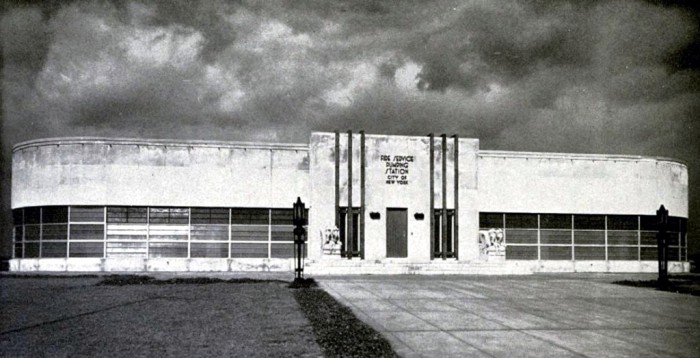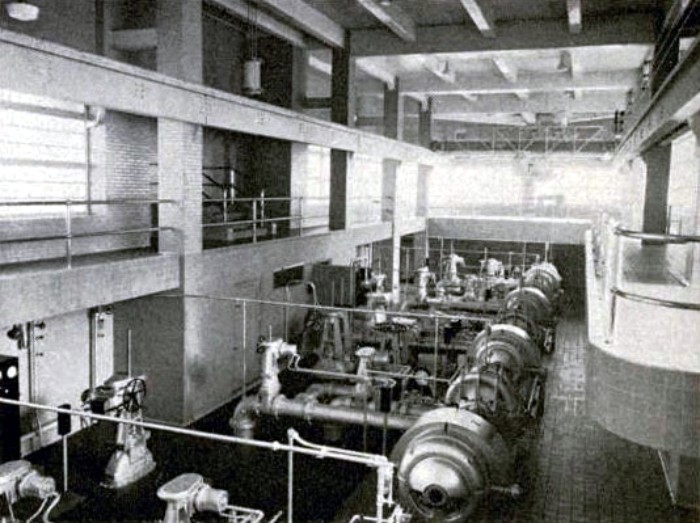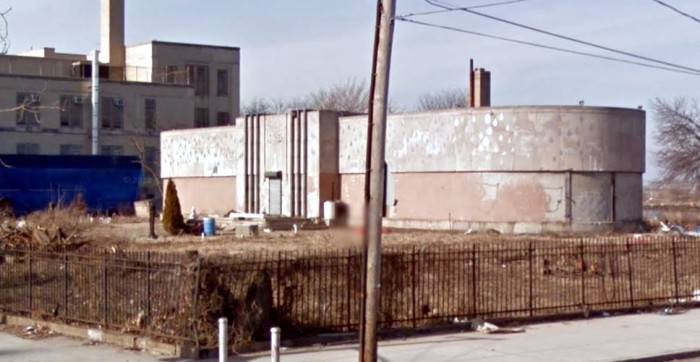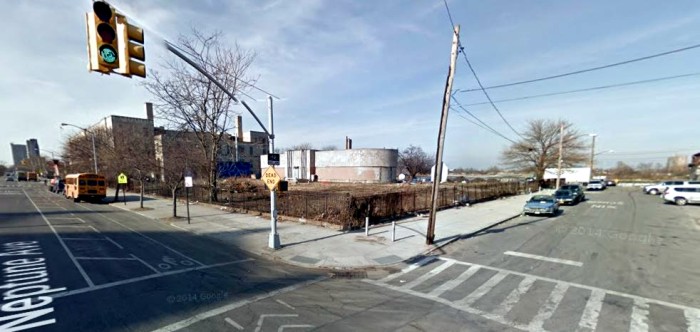Building of the Day: 2301 Neptune Avenue
Brooklyn, one building at a time. Name: Coney Island Pumping Station Address: 2301 Neptune Avenue Cross Streets: West 23rd Street and Bayview Avenue Neighborhood: Coney Island Year Built: 1938-39 Architectural Style: Moderne Architect: Irwin S. Chanin Other Buildings by Architect: Chanin Building, Century and Majestic apartment buildings, as well as Broadway theaters and Garment Center…


Brooklyn, one building at a time.
Name: Coney Island Pumping Station
Address: 2301 Neptune Avenue
Cross Streets: West 23rd Street and Bayview Avenue
Neighborhood: Coney Island
Year Built: 1938-39
Architectural Style: Moderne
Architect: Irwin S. Chanin
Other Buildings by Architect: Chanin Building, Century and Majestic apartment buildings, as well as Broadway theaters and Garment Center buildings, all Manhattan
Landmarked: No, but on National Register of Historic Places (1981)
The story: Way out on the northern side of Coney Island, the City of New York built a Pumping Station building for the Fire Department. The year was 1938, and the city was still awarding prominent city buildings to some of its most important architects of the day. The pumping station was necessary to maintain water pressure on this side of Coney Island, rather ironic considering that right behind it was the beginning of the inlet known as Coney Island Creek, part of the mighty Gravesend Bay.
The station is a one-story oblong building designed in the Moderne style of architecture, the beginnings of the American version of the sleek and modern International Style. This style was quite popular with Depression-era public buildings here in New York, and was hailed as an example of the new clean style of building that was replacing our dated reliance on Colonial Revival and other classical forms of public architecture. This was one of many government PWA (Public Works Projects) buildings constructed during the Great Depression.
The architect of this building was Irwin S. Chanin. He was a graduate of Cooper Union, and one of that era’s most impressive architects. Chanin was actually born in Bensonhurst in 1892, but then moved back to the Ukraine with his Ukrainian Jewish family, until they returned again to Bensonhurst in 1907. He graduated from Cooper Union in 1915 with a degree in both architecture and engineering. After a stint building subway lines, he enlisted in the Army. After World War I, he began his career as a developer, building a few modest frame houses in Bensonhurst.
He partnered with his younger brother Henry I. Chanin, and the two began the Chanin Construction Company, building more houses in Brooklyn, and as their experience grew, branching out into larger projects such as office buildings in Downtown Brooklyn. They then left Brooklyn behind to concentrate on Manhattan. The company became known for their showroom buildings in the Garment Center and their theaters in the Theater District. Employing a theater architect with the unfortunate name of Herbert J. Krapp, the company built six theaters in the district, including the Majestic Theater, along with the Roxy movie theater and the Lincoln Hotel, now the Milford Plaza.
In 1926, he attended the Exposition Internationale des Arts Decoratifs et Industrials Modernes in Paris. It changed his life. He returned with the iconography and forms of this new architectural and ornamental style swirling in his head. We call it Art Deco. Chanin Construction stopped playing with theaters, and moved on to bigger things. He first built the Chanin Building in 1927-1929. He designed it, but was not a registered architect at the time, and had to process the work through Sloan and Robertson. They had a hand in the exterior form of the building, but the design of the interior and the commission of the ornament is all Chanin.
The building was constructed as an office building that would house the offices of Chanin Construction on the top floor, and the rest was rentable office space, built on spec. It remains one of the most iconic of New York City’s Art Deco masterpieces, highlighted by the bas-relief naturalistic sculptures and patterns of French-trained sculptor Rene Chambellan. It’s one of my favorite New York City buildings. The artwork on the façade, and in the lobby, on the elevator doors, everywhere, is simply gorgeous. Chambellan was also responsible for the sculpture on the Williamsburg Bank Building and the Kings County Savings Bank on Eastern Parkway, here in Brooklyn, among other works.
Chanin went on to design the Majestic and Century apartment buildings on Central Park West in the early 1930s. The company would continue to build, constructing homes on Long Island, this pumping station, and during World War II, prefab housing and military structures in Maryland. Irwin Chanin ran the company from the top floor of his wonderful building until his death at the age of 96, in 1988.
The Pumping Station was originally a limestone building with black marble trim sitting on a black marble base. It used to have a continuous wall of ground floor windows that encircled most of the building. Those windows are all sealed up or covered over today. It once had a grand entrance, with marble stairs flanked by Art Deco style statues of Pegasus. The building we see today is a shade of its former self. The building’s function became redundant, and the city abandoned it. It’s been pretty much unloved ever since, and has lost almost all of its detail. It now sits on a plot of land next door to IS 239, the Mark Twain School for Gifted and Talented.
The Pumping Station has been hailed as an important piece of American architecture, designed by one of the Art Deco period’s most important architects and builders. It was placed on the National Register of Historic Places in 1981, while Chanin was still alive. Hopefully he never came out here to see how the city disregarded his building. Let’s hope something can be done with this unique structure, and it is not left to simply rot in a field by the edge of the ocean. Fortunately, the Pegasus statues were taken to the Brooklyn Museum, and are not lost forever.
(Photo: Jim Henderson for Wikipedia)













Nice building!
– Kenneth Fingerman